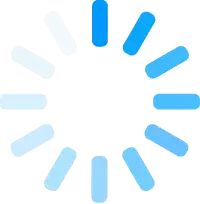This is meant to be a general guide to the study and how to analyze the project data.
statistics
Description
PSCH 313
Final
Project - Steps for Analyzing Data
Halo
Effect and Leadership Project
This is meant to be a general guide to the study and how to
analyze the project data. You can find a copy of the actual survey in the
project folder and you can look at the survey link starting next week 4/27. You
will want to study the exact measurement scales and other relevant information
when you develop your methods section.
Hint: If you look in a variable window in SPSS and
you see labels, but not names, or vice versa, right-click in the window and
select what you would like to see.
Study and
Variable Overview
Photos: The photos are of actual politicians drawn from the
Nevada State Legislature information web page. Because we wanted to keep gender
of the target person constant (i.e., we did not want to study differences in
perceptions of males and females), we chose one gender (female) images. As you
know, we pilot tested these images and chose the most and least attractive photos
from an original set of 10. Thus, there was an “Attractive” target photo and an
“Unattractive” target photo
(NOTE: I HATE using the term “unattractive” in this
research. It would be more appropriate to say “less attractive” relative to the
other photo. However, it is less cumbersome to explain what we are examining in
this project. In your papers, use whichever phrasing (i.e., attractive vs.
unattractive; more attractive vs. less attractive) you are comfortable with.)
In this study we will examine attractiveness effects on
positive trait perceptions (Hypothesis 1, this is consistent with classic halo
effect research). We will also examine attractiveness effects on perceptions of
traits associated with good leadership (Hypothesis 2). The leadership traits
were drawn from an article by Kirkpatrick and Locke (1991). Note that, given
the fact that these are female leaders in the photos, this may have some
interesting implications you might want to develop in your papers. One way or
another, you will want to extend what we know about halo effect to how we might
differentially perceive leaders based on attractiveness.
Grouping Variable: Condition
1 = Attractive
2 = Unattractive
We randomly assigned participants to see one of the target
photos when they completed the trait ratings. This is our manipulation of the
independent variable. This is represented by the variable “condition” in the
SPSS file. We will use this as our grouping variable to test our hypotheses.
Dependent (SPSS
“Test”) Variables
Manipulation Check. Just because we thought the attractive target
was more attractive than the other target does not mean our participants agreed
with this. We will have to do a “Manipulation Check” to ensure that the “attractive”
target was perceived as more attractive than the “unattractive” target. Each
participant rated the attractiveness of the targets on a 1 (not at all
attractive) to 7 (extremely attractive) scale. We will want to verify that
there is a significant difference here before we proceed with the tests of our
hypotheses. This variable in SPSS is:
attractive
Hypothesis 1. People
perceived as more physically attractive will be perceived to possess higher
levels of socially desirable personality traits compared to people perceived as
less physically attractive.






